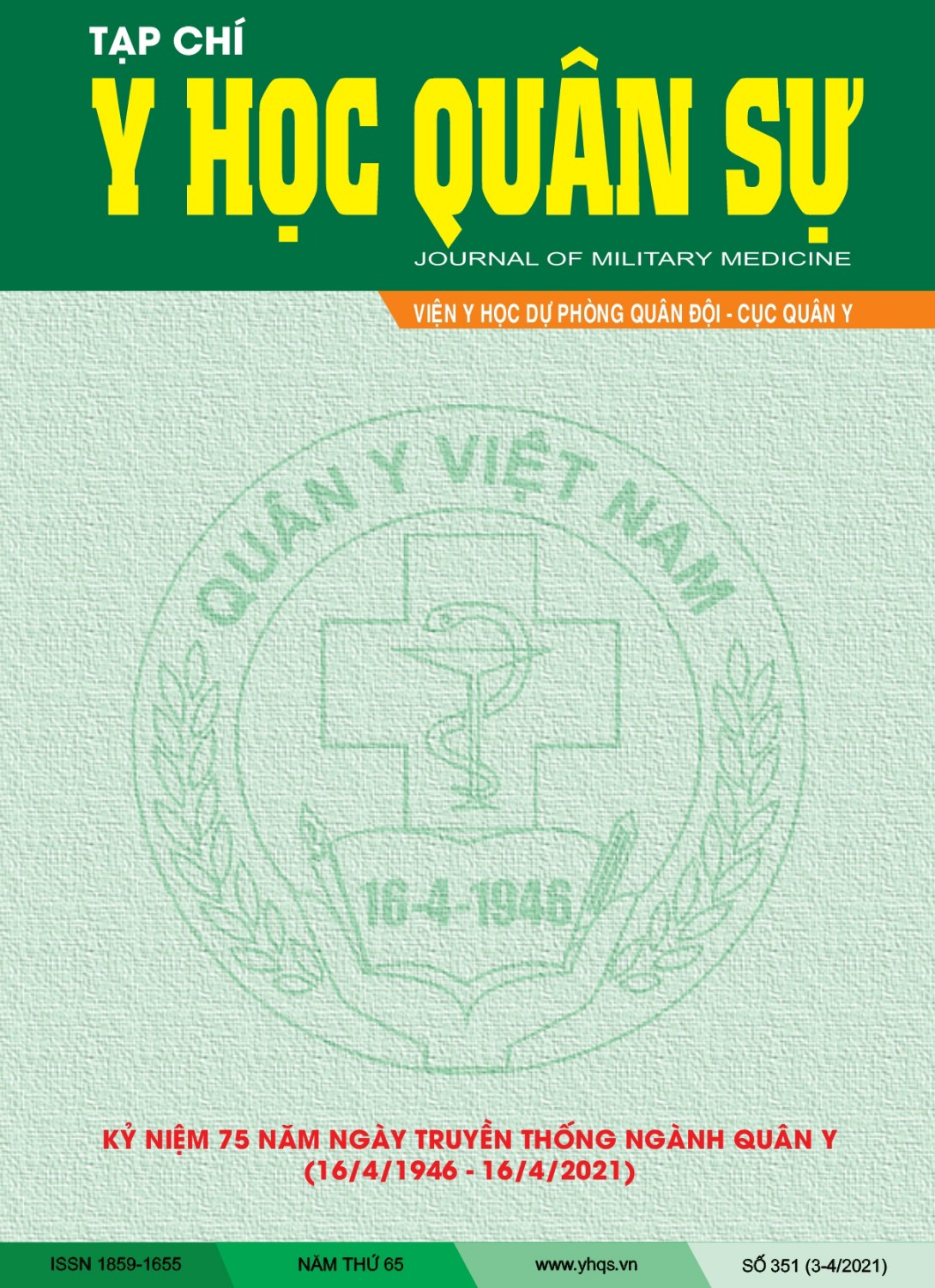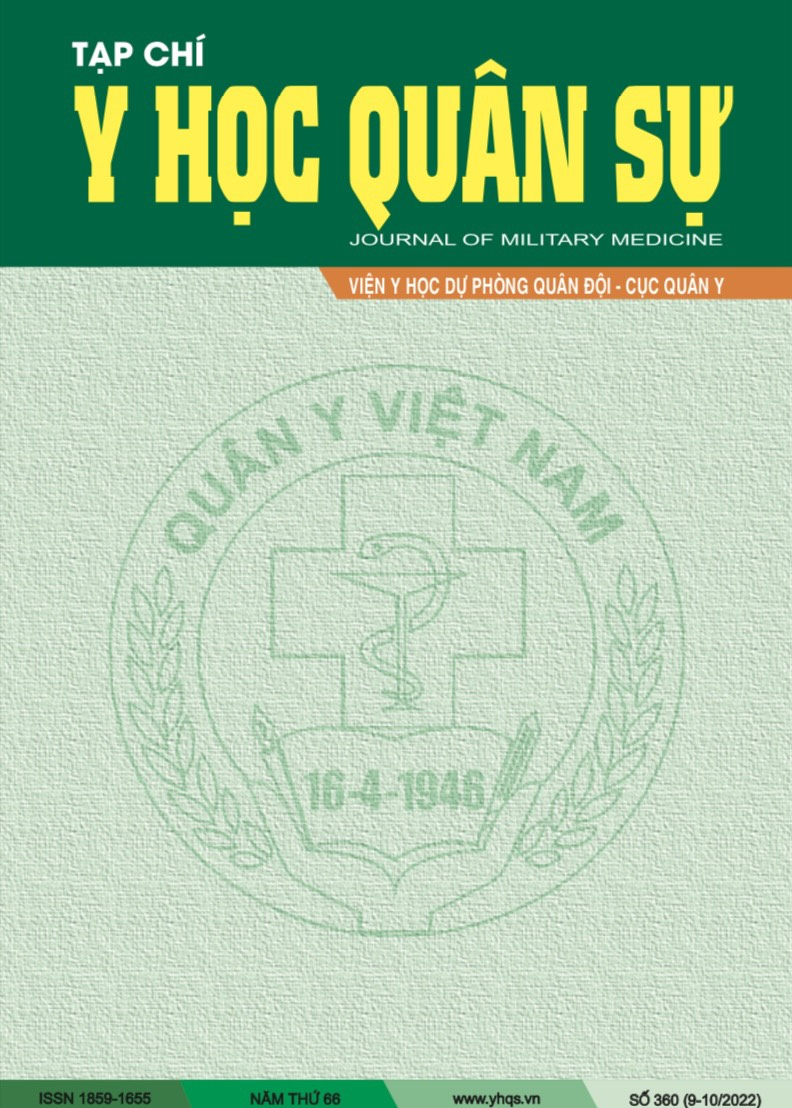ĐÁNH GIÁ NHẬN THỨC CỦA ĐIỀU DƯỠNG CÁC KHOA LÂM SÀNG VỀ YẾU TỐ NGUY CƠ VIÊM TĨNH MẠCH DO CATHETER TĨNH MẠCH NGOẠI BIÊN.
Từ khóa:
Nhận thức, viêm tĩnh mạch, tĩnh mạch ngoại biênTóm tắt
Nghiên cứu mô tả cắt ngang, đánh giá nhận thức của điều dưỡng về các yếu tố nguy cơ liên quan đến viêm tĩnh mạch do catheter tĩnh mạch ngoại biên, trên 185 điều dưỡng nhân viên, học viên đang làm việc, học tập tại các khoa lâm sàng Bệnh viện Đại học Y Hà Nội, từ tháng 3-6/2020. Kết quả: Đối tượng nghiên cứu có tỉ lệ lớn đã nhận thức đúng về tầm quan trọng (79,5%) mức độ thường xuyên gặp (58,4%) của viêm tĩnh mạch; song có tỉ lệ thấp nhận thức đúng về các yếu tố nguy cơ gây viêm tĩnh mạch khác, như nguyên nhân viêm sau truyền (16,8%), vị trí truyền như chân (44,6%), độ pH thấp (21,1%), giới nữ (3,2%). Kết luận: Cần phải đào tạo thêm kiến thức cho điều dưỡng về các yếu tố nguy cơ viêm tĩnh mạch do đặt catheter tĩnh mạch ngoại biên.
Tài liệu tham khảo
1. Tagalakis V, Kahn S.R, Libman M, Blostein M (2002), “The epidemiology of peripheral vein infusion thrombophlebitis: A critical review”, Am J Med, 113 (2): 146-51.
2. Intravenous Nurses Society (1998), “Revised intravenous nursing standards of practice”, J Intraven Nurs, 21 (Suppl 1): S34-6.
3. Webster J, Osborne S, Hall J, Rickard C (2009), “Clinically indicated replacement versus routine replacement of peripheral venous catheters”, Cochrane Db Syst Rev, (2).
4. B.S. Niël-Weise, T. Stijnen, P.J. van den (2010), “Broek Should in-line filters be used in peripheral intravenous catheters to prevent infusion-related phlebitis? a systematic review of randomized controlled trials”, Anesth Analg, 110 ,
pp. 1624-1629.
5. W.L. Lee, H.L. Chen, T.Y. Tsai et al (2009), “Risk factors for peripheral intravenous catheter infection in hospitalized patients: a prospective study of 3165 patients”, Am J Infect Control, 37,
pp. 683-686.
6. INS (2011), “Infusion Nursing Standards of Practice. Journal of Infusion Nursing”, Supplement, 34 (1s).
7. Lanbeck P, Odenholt I, Paulsen O (2004), “Perception of risk factors for infusion phlebitis among Swedish nurses: a questionnaire study”, J Infus Nurs, 27: 25e30.
8. P.J. Carr, N.S. Higgins, M.L. Cooke et al (2018), “Vascular access specialist teams for device insertion and prevention of failure”, Cochrane Database Syst Rev, 3, p. CD011429.
9. M.C. Wallis, M. McGrail, J. Webster et al (2014), “Risk factors for peripheral intravenous catheter failure: a multivariate analysis of data from a randomized controlled trial”, Infect Control Hosp Epidemiol, 35 (1), pp. 63-8.
10. P. Gallant and A.A. Schultz (2006), “Evaluation of a visual infusion phlebitis scale for determining appropriate discontinuation of peripheral intravenous catheters”, J Infus Nurs, 29 (6), pp. 338-45.
11. N.P. O’Grady, M. Alexander, L.A. Burns et al (2011), “Guidelines for the prevention of intravascular catheter-related infections”, Am J Infect Control, 39 (4 Suppl 1), pp. S1-34.
12. M.C. Wallis, M. McGrail, J. Webster et al (2014), “Risk factors for peripheral intravenous catheter failure: a multivariate analysis of data from a randomized controlled trial”, Infect Control Hosp Epidemiol, 35 (1), pp. 63-8.
13. G. Cicolini, L. Manzoli, V. Simonetti et al (2014), “Phlebitis risk varies by peripheral venous catheter site and increases after 96 hours: a large multi-centre prospective study”, J Adv Nurs, 70 (11), pp. 2539-49.
14. R. Higginson, A. Parry (2011), “Phlebitis: treatment, care and prevention”, Nurs Times, 107 (36), pp. 18-21.
15. A. Mandal, K. Raghu (2019), “Study on incidence of phlebitis following the use of pherpheral intravenous catheter”, J Family Med Prim Care, 8 (9), pp. 2827-2831.
16. Chu Văn Long (2019), Tình trạng viêm tắc tĩnh mạch và các yếu tố liên quan trên người bệnh sau đặt catheter tĩnh mạch ngoại vi tại Bệnh viện hữu nghị Việt Đức, Luận văn thạc sĩ điều dưỡng, Đại học Y Hà Nội, Hà Nội.



